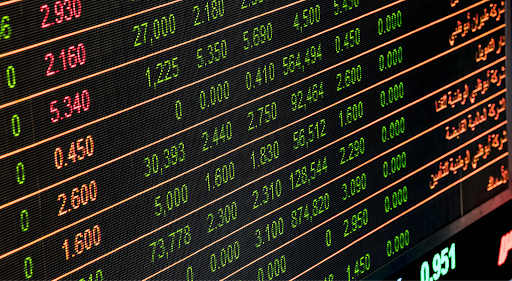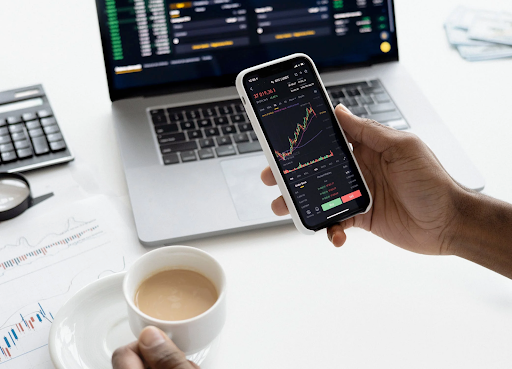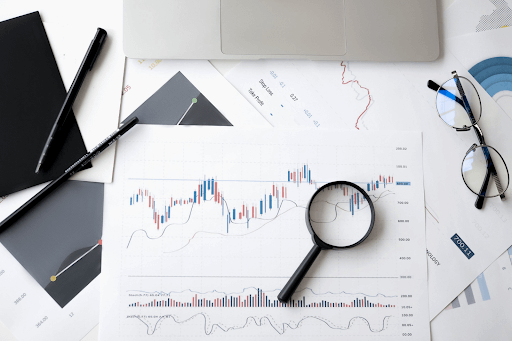What is Algorithmic Trading?
Algorithmic trading, also known as algo-trading, black box trading or automated trading, is a strategy that uses computer programs under a specific set of instructions to place a trade. It works based on price, timing, quantity, or any other supporting mathematical model. This type of trading has become popular due to its ability to generate profits and income at a level that is impossible for a human alone.
Most traders today in the market depend on high frequency trade due to its high returns. The high frequency trade has unique capabilities including the ability to place a large number of orders across multiple trade markets. It also works at rapid speeds based on programmed instructions.
Benefits of Algorithmic Trading
There are many benefits to algorithmic trading, especially in instances where trades are executed within the shortest time possible. The following are some of the key benefits of algo-trading.
Ability to Remove Human Emotions from the Market
The ability of algorithmic trading to remove human emotions from trading activities is one of its prime advantages. This is due to the fact that trading activities are defined and based on a specific set of instructions. Human trading, unlike algo-trading, is vulnerable to emotions that may lead to irrational trading decisions. Algo-trading is mainly based on automated or computerized trade that does not feature human interference. Consequently, algo-trading constantly urges traders not to invest in more risks than they can handle so as to avoid emotions.
Accuracy in Trading
Achieving success in algorithmic trading is highly dependent on accuracy and timing. Normally, if humans were involved in algo-trading, room for error would be quite significant. However, algo-trading banks on a computer to execute trades under a set of instructions to reduce the probability of errors. Consequently, planning is also encouraged so as to make the right trade decisions that will improve and enhance accuracy in transactions.
Ability to Place Multiple Trades Under Fast Speeds
An algorithmic trade creates an avenue where traders can place numerous trades while maintaining speed and accuracy. Making multiple trades increases the probability of raking in more profits. Increased innovation and adoption of technology has rapidly increased the speed of transactions.
Ability to Back Test
Traders are required to find out which parts of their trading system have faults and craft out solutions to correct them as quickly as possible to avoid unnecessary losses. With algo-trading, traders have the ability to back test their trades with past data and compare them to current data. This is a recommended strategy to see if trades would have come back the same.
Reduced Transaction Costs
Algo-trading has incorporated technology in trading activities that greatly reduces transaction costs. Traders don’t need to stay glued to their devices while constantly monitoring transactions. The system is programmed by a set of instructions that monitor trading activities. Trades can be conducted without constant supervision, saving costs and time that would have been used to constantly monitor trading activities.
High Frequency Trading
High Frequency Trading (HFT) is a unique method of algo-trading that incorporates high utility and powerful computers to conduct trades under a specific set of instructions. These transactions take place at very high speeds through the use of complex algorithms. Traders who use high frequency trading systems usually have a higher turnover than those who use other systems. Despite high turnovers, algo-trading also has high trade ratios.
Increased Market Volume
Algo-trading has provided traders with the unique opportunity to diversify their trading platforms. Traders, who include individuals and companies, can transact large volume shares efficiently and at great speeds. This means that traders in the market can be allowed to buy numerous shares, sell them almost instantly and receive a high turnover.

Forms of Trading and Investment Activities used in Algo-Trading
Mid to Long Term Investors
Mid to long term investors buy stocks in large quantities using algo-trading when they have no intention of disrupting stock prices with large investments. Some of these investors in the market include side firms, mutual funds, insurance companies, and pension funds.
Short Term Traders
Short term traders are also known as market makers or sell-side traders in the market. Brokerage houses are considered the prime market makers in any trade. They make it easy and smooth for the financial markets to purchase and sell their stocks at convenient prices. Short term traders often place bids in a two sided market. However, market makers take a risk in purchasing assets that may decline in value over time.
Systematic Traders
Systematic traders incorporate both manual trading systems and partly digital trading systems using computers. Such traders focus on defining and analyzing trade goals and objectives to ensure risk control and mitigation while investing in any trade. Consequently, systematic traders feature both high frequency trading and systematic trading to increase profits and greatly reduce the risk of losses.
Popular Strategies of Algorithmic Trading
Momentum Strategy
Momentum trading, also known as momentum investing, is a trading strategy that traders and companies invest in and buy shares when their value is relatively going up and sell them when they start exhibiting signs of going down. It takes advantage of market volatility to make huge turnovers. Basically, the momentum strategy works through purchasing short term uptrends and selling them as soon as it is discovered that they are going down.
A good example of where momentum strategy can work is when the traders incorporate the two moving averages concept. The first average is a short term spanning over 30 days, and the second one over 80 days. If the trader notices an overlap between the 50-day and 80-day averages, this is definitely a sign to sell.
Mean Reversion Strategy
This is one of the popular strategies that strives to maximize profits as the price of a trade goes back to its normal ranges. It works on the mean reversion theory that states that when the price of an asset reaches its peak, it is bound to go back to its normal or average levels. It can also apply to technical indicator levels, volatility, earnings, and earnings growth rate. For example, the price of asset A is 100 and the price of asset B is 50. When the price of asset B goes down and A doesn’t, this provides an opportunity for mean reversion trade.
Sentiment based strategy
Sentiment strategies work by filling up positions in the market driven by bulls and bears. A bullish sentiment occurs where there is a positive attitude and prices of an asset are highly likely to go up. A bearish sentiment, on the other hand, occurs where there is a negative attitude and prices are projected to go down. For example, in a bullish sentiment, there is a positive attitude where every trader is buying but only a few are selling. On the other hand, when the bulls are in control, prices fluctuate and few people are interested in buying – but there are many sellers.
Statistical Arbitrage Strategy
The statistical arbitrage strategy, also known as stat arb or pairs trading, is a combination of trading strategies that adopt the mean revision analysis to invest in thousands of securities over a short amount of time. Stat arb works though two phases that reduces the exposure to beta. The two phases include scoring and risk reduction. Scoring gives each stock a rank, mostly based on traders’ desirability. Risk reduction, on the other hand, brings together desirable stocks in a bid to reduce risk. For example, a trader may conclude that firm A is overvalued while firm B is undervalued. This would prompt the opening of a long position in firm A and a short position in firm B. Here, a trader makes profit from both firms.
Market Making Strategy kevin yoder
This is one of the popular trading strategies that allows the market makers to buy and sell in the market. Consequently, they also get a chance to create and dominate the market with possibilities of hiking the market price to increase profits. Traders are also allowed to cancel their buy or sell orders at any intended time in the future. However, market makers are often not willing to make their transactions before they are positive due to issues that may come unexpectedly such as market volatility.
Securities often hire market makers as a strategy to offer buy and sell quotations to other traders in the market. Market making strategy operates on a concept known as a spread. This is the difference between the bidding price during buying and asking prices while selling. For example, a market maker can purchase 2000 shares for a company for $100 per share, which is the asking price. The market maker can then decide to sell the shares at $200, which is the bid price. The gap between the asking price and the bidding price is what is defined as the spread.

Differences
Algorithmic trade has a few unique differences from other forms of trading. In fact, it is the most popular and high turnover form of trading in the current market. One of the differences is that it is expensive to set up and trade unlike human trading. Algorithmic traders have to incur expenses while purchasing high frequency trading systems to start trading. Consequently, traders who use algorithmic trading systems do not constantly supervise their trades as programmed computers are tasked with monitoring and conducting trades at the most appropriate time.
One of the most significant differences is that the algorithmic trade is crafted for a long term trade unlike the rest of the other trade systems that are short term. The last difference is that the trading system allows for fast and bulk trades with relatively high turnover levels. The fast nature of this system is supported by powerful programmed computers.
Is Algorithmic Trading Safe?
Algorithmic trading is one of the safest forms of trading. Human trading is exposed to very many variables and room for errors that may lead to losses. Algorithmic trading ensures safety by making entries into a highly powerful computer that uses algorithms to conduct and monitor trades. However, the question about the safety of algorithmic trading varies between different traders and investors in a market. It is often advised that before plunging into a trade investment decision, traders should not expect a jackpot because this type of trading is not learned overnight.
The Future of Algo-trading
The future seems bright for algorithmic trading. In fact, industry research suggests that Algo-trading will grow from $11.1 billion in 2019 to $18.8 billion by 2024. Taxes and regulations are likely to be introduced to prevent misuse, but algorithmic trading, especially high-frequency, is expected to remain the dominant form of trading.
As artificial intelligence is continually improving, it’s use in algo-trading will grow as well. The algorithms used will become more complex, allowing even more automation than is currently possible. Systems may be able to self-improve their strategies to adapt and make smarter decisions that could account for more fluctuations in the market. This suggests that market crashes could be completely avoidable in the future.

